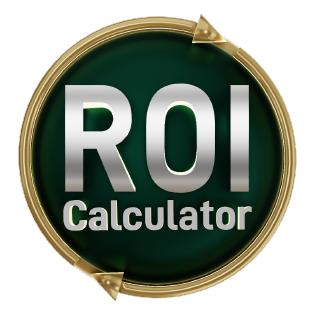In the ever-evolving landscape of digital marketing, Pay-Per-Click (PPC) advertising stands as a dynamic and influential tool for businesses looking to reach their target audience, drive conversions, and boost their online presence. Read on to understand more!
What is Pay-Per-Click (PPC) Advertising?
At its core, PPC advertising is a form of online advertising where advertisers pay a fee each time a user clicks on one of their ads. It's a highly targeted approach that allows businesses to display their ads to users actively searching for products, services, or information related to their offerings. PPC advertising agencies specialize in optimizing and managing pay-per-click campaigns to maximize ROI for their clients.
Imagine this scenario: You own a small bakery specializing in artisanal cupcakes, and you want to reach people in your local area who are searching for "delicious cupcakes near me." PPC advertising enables you to bid on keywords like "cupcakes near me," and when someone in your vicinity enters that search query, your ad can appear at the top of the search results. You only pay when someone clicks on your ad, making it a cost-effective way to connect with potential customers.
How Does PPC Work?
B2B PPC advertising operates on a bidding system. Advertisers compete in an online auction to have their ads displayed when specific keywords are searched. Here's a simplified breakdown of how it works:
1. Keyword Selection: You choose relevant keywords and phrases that you want your ads to appear for. These keywords should align with the products or services you offer.
2. Bid Amount: You specify the maximum amount you're willing to pay each time someone clicks on your ad. This bid amount is a crucial factor in determining when and where your ad appears.
3. Ad Rank: Your ad's position in the search results is determined by a combination of your bid amount and the quality and relevance of your ad. This is known as your Ad Rank.
4. Ad Display: When a user searches for one of your chosen keywords, the search engine evaluates all the ads competing for that keyword and selects the most relevant ones to display.
5. Clicks and Costs: If a user clicks on your ad, you're charged the amount of your bid. The user is then directed to your website or landing page.
6. Conversion: Your ultimate goal is to convert these clicks into valuable actions, such as a purchase, a lead form submission, or some other desired outcome.
7. Performance Monitoring: To optimize your PPC campaign, you continually monitor its performance, making adjustments to keywords, bids, and ad copy as needed.
Benefits and Advantages of PPC Advertising
B2B PPC advertising offers several compelling advantages for businesses of all sizes:
1. Instant Visibility: Unlike some other digital marketing strategies that take time to build momentum, PPC ads can appear at the top of search results almost instantly, giving you immediate exposure to potential customers.
2. Targeted Reach: PPC allows you to target specific keywords, demographics, locations, and even device types, ensuring your ads reach the right audience at the right time.
3. Measurable Results: PPC provides detailed performance metrics, allowing you to track the effectiveness of your campaigns and make data-driven decisions.
4. Cost Control: You have full control over your budget, and you only pay when someone clicks on your ad, making it a cost-effective advertising option.

PPC Advertising Strategies
PPC (Pay-Per-Click) advertising is a dynamic digital marketing strategy that demands thoughtful planning and continuous refinement. To succeed in the competitive online landscape, it's essential to adopt effective PPC advertising strategies. Here are key strategies to help you make the most of your PPC campaigns:
1. Thorough Keyword Research: Begin by conducting comprehensive keyword research. Use keyword research tools to identify high-intent keywords relevant to your business. This ensures your ads reach users actively searching for your products or services.
2. Negative Keywords: Equally important is the identification of negative keywords. These are terms for which you don't want your ads to appear. Adding negative keywords helps refine your targeting and prevent wasteful clicks.
3. Ad Copy Optimization: Craft compelling ad copy that not only includes relevant keywords but also highlights your unique selling propositions (USPs). Create a sense of urgency and include a clear call to action (CTA) to entice clicks.
4. Ad Extensions: Utilize ad extensions to provide additional information and value to users. Sitelink extensions, callout extensions, and structured snippet extensions can make your ad stand out and offer more context.
5. Landing Page Optimization: Ensure that your landing pages align with your ad messaging and provide a seamless user experience. Optimize landing pages for fast loading times, mobile responsiveness, and clear calls to action.
6. Ad Scheduling: Analyze your data to determine when your target audience is most active and adjust your ad schedule accordingly. This ensures your ads are displayed during peak engagement times.
7. Geo-Targeting: Geo-targeting allows you to show your ads to users in specific geographic locations. Tailor your campaigns to target areas where your products or services are most relevant.
8. Bid Management: Effective bid management is crucial for controlling costs and achieving campaign objectives. Consider automated bidding strategies, like target CPA or target ROAS, for efficient bid optimization.
9. Quality Score Improvement: A high Quality Score can lead to lower CPCs and better ad positions. Focus on improving your ad's relevance, click-through rate (CTR), and landing page experience to boost your Quality Score.
10. A/B Testing: Continuously test different ad variations to identify what resonates best with your audience. Experiment with headlines, ad copy, ad extensions, and landing page elements to optimize performance.
11. Conversion Tracking: Implement conversion tracking to measure the success of your campaigns. This allows you to attribute conversions and understand the ROI of your PPC efforts.
12. Competitor Analysis: Keep an eye on your competitors' PPC strategies. Analyze their ad copy, keyword selection, and ad extensions to identify opportunities for differentiation.
13. Budget Management: Set realistic budgets for your campaigns and allocate funds strategically. Adjust budgets based on campaign performance and priorities.
14. Remarketing: Use remarketing campaigns to re-engage users who have previously visited your website but didn't convert. Tailor your messaging to their specific interests or behaviors.
15. Monitor and Adjust: Regularly review campaign performance metrics and make data-driven adjustments. Continuously refine your strategies to adapt to changes in user behavior and market trends.
By implementing these B2C PPC Advertising strategies and staying committed to monitoring and optimization, you can maximize the effectiveness of your campaigns, reach your target audience, and drive valuable conversions in the competitive digital advertising landscape.
Valuable Insights For PPC Advertising
In the realm of PPC (Pay-Per-Click) advertising, acquiring valuable insights is akin to unlocking the secret formula for campaign success. These insights are not only enlightening but also essential for making informed decisions that can significantly impact your ROI. Here are some invaluable insights to help you navigate the complexities of PPC advertising:
1. Data-Driven Decision-Making: Embrace data as your compass in the PPC landscape. Regularly analyze key performance metrics like click-through rate (CTR), conversion rate, cost per click (CPC), and return on investment (ROI). Data-driven decisions can lead to more effective strategies and budget allocations.
2. Ad Position vs. Performance: Understand the relationship between ad position and performance. While a top ad position may seem desirable, it can come at a higher cost. Finding the sweet spot where you achieve a balance between visibility and cost efficiency is key.
3. Quality Score Impact: Recognize the profound impact of Quality Score on your campaigns. A high Quality Score not only reduces costs but also improves ad placements. Focus on improving ad relevance, CTR, and landing page quality to boost your Quality Score.
4. Seasonal Trends: Be attuned to seasonal trends and adjust your PPC strategy accordingly. Some industries experience significant fluctuations in demand during specific times of the year. Anticipate these shifts and allocate budgets and resources accordingly.
5. Device Targeting: Analyze how users on different devices interact with your ads. Consider creating device-specific campaigns or adjusting bids to optimize your strategy for mobile, desktop, and tablet users.
6. Long-Tail Keywords: Recognize the potential of long-tail keywords. While they may have lower search volumes, they often signify high user intent and can result in more qualified clicks and conversions.
7. Competitor Insights: Monitor your competitors' PPC efforts. Discover which keywords they target, what ad copy they use, and how they structure their campaigns. This competitive intelligence can inform your own strategies.
8. Ad Scheduling: Leverage ad scheduling to show your ads at the times when your target audience is most active. This can help you maximize your budget by focusing on peak engagement periods.
9. Remarketing Strategies: Implement dynamic remarketing to re-engage previous website visitors with personalized ads. Tailor your messaging based on their past interactions to increase the chances of conversion.
10. Geo-Targeting Precision: Fine-tune your geo-targeting to reach users in specific locations. Analyze the performance of different regions to identify where your ads generate the best results.
11. Attribution Models: Understand how different attribution models (e.g., first-click, last-click, linear) impact your understanding of conversion paths. This insight can guide your budget allocation and campaign optimization.
12. Testing and Experimentation: Embrace a culture of testing and experimentation. A/B test ad variations, landing pages, and bidding strategies to uncover what drives the best results.
By continually seeking and applying these valuable insights in your PPC campaigns, you can refine your approach, optimize your budget, and ultimately achieve a higher level of success in the competitive world of digital advertising. B2C PPC advertising services encompass a range of strategies and tactics aimed at optimizing pay-per-click campaigns to drive targeted traffic and conversions for businesses. Remember that PPC is a dynamic field, and staying adaptable and receptive to new insights is key to maintaining a competitive edge.

PPC Advertising: reaching Your Target Audience Effectively
Mastering the world of PPC advertising is a multifaceted journey that combines the precision of keyword selection, the art of persuasive ad copy, and the strategic deployment of ad extensions. By diligently researching and selecting the right keywords, crafting compelling ad headlines and descriptions, and utilizing ad extensions effectively, you can captivate your audience and drive them towards conversions. Additionally, continuous A/B testing allows you to refine your approach and optimize campaign performance over time.
The key to success in PPC advertising lies not only in the technical aspects but also in the creative and analytical skills required to adapt and thrive in the ever-evolving digital marketing landscape. With a keen understanding of these fundamentals and the support of PPC advertising agencies, you are well-equipped to harness the power of PPC advertising and achieve your marketing objectives.
Contact us for more information and hire our experts for PPC advertising services that can scale your business up in the world of digital marketing.


